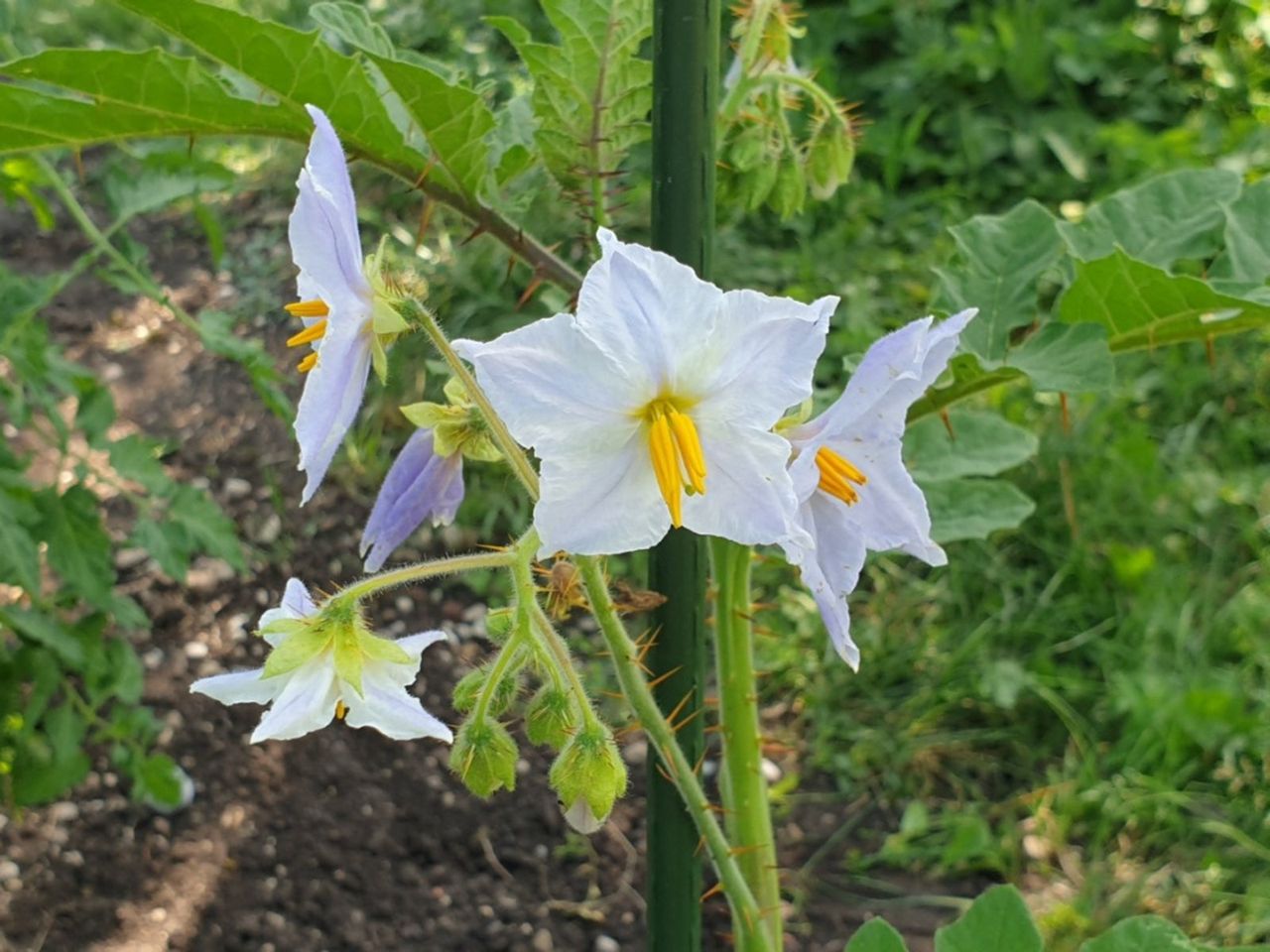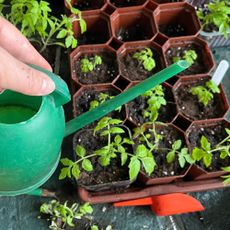What Is A Litchi Tomato: Information About Thorny Tomato Plants


Litchi tomatoes, also known as Morelle de Balbis shrub, isn't standard fare at the local garden center or nursery. It is neither a litchi nor a tomato and is difficult to find in North America. Online suppliers are your best bet for starts or seed. Get to know what is a litchi tomato and then give it a try in your garden.
What is a Litchi Tomato?
The litchi tomato shrub (Solanum sisymbriifolium) was discovered and named by a French botanist. Morelle is the French word for nightshade and Balbis refers to the region of its discovery. This South American species is a member of the nightshade family of plants just as tomatoes, eggplants, and potatoes. The umbrella genus is Solanum and there are varieties that are poisonous if ingested. Litchi tomato and thorny tomato plants are other names for the shrub. Picture an 8 foot (2 m.) tall, spiny, prickly, thorny weed that is even wider than it is tall. This is the litchi tomato plant. It produces small green pods covered in thorns that enshroud the fruit. Flowers are starry and white, much like eggplant blooms. Fruits are cherry red and shaped like small tomatoes with a point on one end. The interior of the fruit is yellow to creamy gold and filled with tiny flat seeds. Try growing litchi tomatoes as a barrier and use the fruits in pies, salads, sauces, and preserves. Thorny tomato plants need similar growing conditions to their cousins.
Growing Litchi Tomatoes
Litchi tomatoes are best started indoors six to eight weeks before the last frost. They require a long growing season and soil temperatures at least 60 degrees F. (16 C.). These thorny tomato plants have little cold tolerance and thrive in hot, sunny locations. Seeds may be purchased at novelty nurseries or rare seed trusts. Use a seed flat with good starter mix. Sow seeds under ¼-inch (6 mm.) soil and keep the flat in a warm area at least 70 degrees F. (21 C.). Keep soil moderately moist until germination, then increase moisture levels slightly for seedlings and never let them dry out. Thin the seedlings and transplant them to small pots when they have at least two pairs of true leaves. When growing litchi tomatoes, treat them in the same manner you would a tomato plant. Transplant them out at least 3 feet (1 m.) apart in well-drained soil in a sunny, protected area of the garden. Incorporate rotted organic material to soil to improve soil quality prior to planting.
Litchi Tomato Care
- Since litchi tomato care is similar to other members of the nightshade family, most gardeners can successfully grow thorny tomatoes. The plants take well to pruning and should be grown in cages or well staked.
- The plant isn't ready to produce until 90 days after transplant, so start it early enough for your zone.
- Watch for similar pests and diseases that afflict tomato plants, such as potato beetles and tomato worms.
- In warm zones, the plant will tend to reseed itself and may even overwinter, but gets a woody stem and even thicker thorns. Therefore, it is probably a good idea to save seed and plant anew annually.
Gardening tips, videos, info and more delivered right to your inbox!
Sign up for the Gardening Know How newsletter today and receive a free copy of our e-book "How to Grow Delicious Tomatoes".

Bonnie Grant is a professional landscaper with a Certification in Urban Gardening. She has been gardening and writing for 15 years. A former professional chef, she has a passion for edible landscaping.
-
 How Often To Water Seedlings? The Best Schedule For Healthy Growth
How Often To Water Seedlings? The Best Schedule For Healthy GrowthLearn how much to water seedlings at every stage of the growing process – from germination to transplanting in the garden – plus the best methods for success.
By Teo Spengler
-
 Sticky Geranium Care: Everything You Need To Know About This Wild And Wonderful Plant
Sticky Geranium Care: Everything You Need To Know About This Wild And Wonderful PlantA sticky geranium is a pretty filler in a flower bed or a pot on your balcony. Don’t let the sticky part of their nature put you off - pollinators love them!
By Tonya Barnett